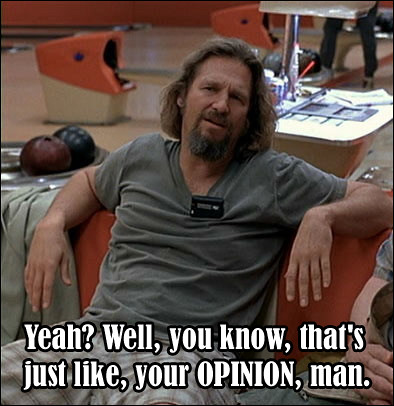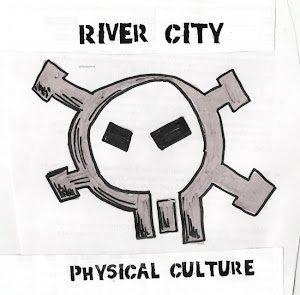
In the discipline of motor behavior, learning or control (what have you), academics subdivide motor activities in to a number of categories. Some of the most fundamental are as follows:
Open vs Closed
Within this paradigm, movements fall in along a continuum from open at one end to closed on the other. A movement that is 'closed' or occurs within a closed environment is one in which there are a limited number of external variables, and the movement is relatively predictable, as is the environment in which it occurs. Think bowling. The ball, the floor, the lane, they are always the same, and hence you can be fairly certain of what to expect when you attempt to perform. The only thing that really changes is internally within the performer, sometimes they have a good shot, sometimes a bad shot.
A movement that is open or more aptly a performance environment that is open is one in which there are many variables outside the control of the performer, and as such they must react correctly to changing stimuli, often on short notice to make adjustments to their regular techniques that fit the changing environment or movements made by their opposition.
Discrete, Serial or Continuous
Researchers and academics also break movements down based upon their beginning and end points within the context.
Discrete movements are essentially singular and irreducible, and begin and end with one motion.
Serial movements are comprised of several connected movements that progress towards a final goal.
Continuous movements are cyclical and ongoing in nature, with no clear beginning or end point.
Example: Crossfit.
In Crossfit, the pull up happens in a closed environment. The rules are always the same, the environment relatively stable and you choose when the rep begins and ends.
How you do the movement determines what type of skill it is:
Deadhangs are like discrete movements; up, down, done.
Swinging Kip Pull Ups are serial, in that you arch, hollow, kip with the hips, pull to the bar, push off the bar, and swing back in to your next rep.
Butterfly Kips are continuous: you're elliptical path is smooth, and an outside observer can not distinguish the beginning from the end and the only real constraints are when you choose to start and stop.
Example: Grappling.
In Judo or Brazilian Jiu Jitsu, there are a lot of drills and training methods that are used 'just because'. Often, the purported reason for doing a drill is to get better at a particular type of technique in randori, rolling or competition.
For example, many BJJ and Judo schools teach the armbar, one from the guard and one from mount. They often teach a drill to help get better at the armbar, to make it more 'automatic'. While it's true that a great number of repetitions of a movement will enhance the automaticity with which it's performed, only within the context within which its practiced. Hence, in order to transfer, the domains and movement types MUST match. Therefore, if a skill is open and serial, but your drill is closed and discrete, the transference will be minimal at best. In fact, there's a strong chance that there will be some interference or negative consequences to your mismatch of training and application. So that we're all on the same page, here's a video to make it clear:
As you can see in the video above, there are different ways to look at and drill the armbar in practice situations, but in the context of application, the armbar is OPEN and SERIAL. In order for Marissa to set up an armbar she has to either force her opponent to react or she must respond to the actions of her opponent. Keith may try to pass, may lose his balance, may commit his arms to certain grips. Marissa must sense these changes in the environment and adjust accordingly, and the matter of executing the arm lock itself never magically appears, it's also after a set up: securing the arm, controlling the upper body, aligning the legs then locking the elbow.
So, what's my point?
My point is this: We all want our practice to make us better at the tasks we want to do. In sport those tasks are almost always of a competitive and open variety. In one way, martial arts that include sparring are already a step ahead, as non-cooperative sparring accounts for much of this training need. Non-cooperative sparring is always open by nature.
But what about the other hour of class, the one you spend drilling? Are hundreds of uchikomis and 20 minutes of drills like the continuous armbar making you a better fighter?
The answer is a complex one. The short answer is yes, a little. The long answer is something more like: While repetitive closed drills of a discrete or continuous nature likely won't make you WORSE as a fighter, they are liking doing very little to make you better.
Most martial arts are taught in a format like this:
1. Let me show you this move
2. You try it out, slow and without resistance
3. You spar, and hope you think to do that move during sparring
4. Some weeks later you are expected to do it well in repetitive drilling
(5. One day you will do it naturally during sparring)
Depending on who your teacher is or where you train, each of these segments may take up varying proportions of your time. They all play necessary roles within the framework of going from not knowing them at all to correct placement of automatic movements. In the beginning, you absolutely have to have the movements shown to you. After this, you will go through a period where simply remember the order of the steps is the main focus of your practice. Once you no longer struggle to simply remember the movement, then you want to get better at it: do it faster, more precisely, with more force or better timing. Once you 'know' the movement, then you have to apply the movement within the environment of sparring. That's where things start getting tricky. That's also when the motor learning side of things goes from the purely mechanical to the cognitive: you have to sense changes, perceive what they mean, interpret the relevant information to you, choose a response and then execute that response.
Most martial arts instructors do a good job of showing you techniques. They themselves are technical masters of these movements, and can demonstrate to you how to do them correctly in great detail. Many students are adept at mimicking these movements within the context of drilling. They can replicate the motions well after a short period of practice like this. The hard part comes when it's time to show you how, when and where to apply those techniques. How do you know when it's time to try and stick your foot in the hip, turn and go for it?
One answer is to incorporate drills that require decisions. For instance, perhaps you can still drill the armbar from the closed guard, but your partner can attempt two different passes. Each will require a different correct response to set up an armbar as an answer to their attempt to pass.
As simple as this drill is, it's still infinitely better (1 vs 0) than the continuous armbar drill showed at the end of the first section of the video, at least in terms of perception, decision making and reaction time. This is a good time to introduce the concept of degrees of freedom: the number of possible outcomes or choices. In reality, BJJ contains hundreds of degrees of freedom and as such is probably one of the most cognitively rich sports out there. In terms of drilling, simply going from only one possible answer (closed) to two or more (open) instantly enhances the experience of the trainee. Due to the open nature of the sport, an athlete with poor movements but sound cognitive skills will likely fair better in sparring and competition. Obviously combining both would make for a superior athlete.

![]()
![]()
![]()
![]()
![]()
![]()



![]()
![]()
![]()
![]()
![]()
![]()








